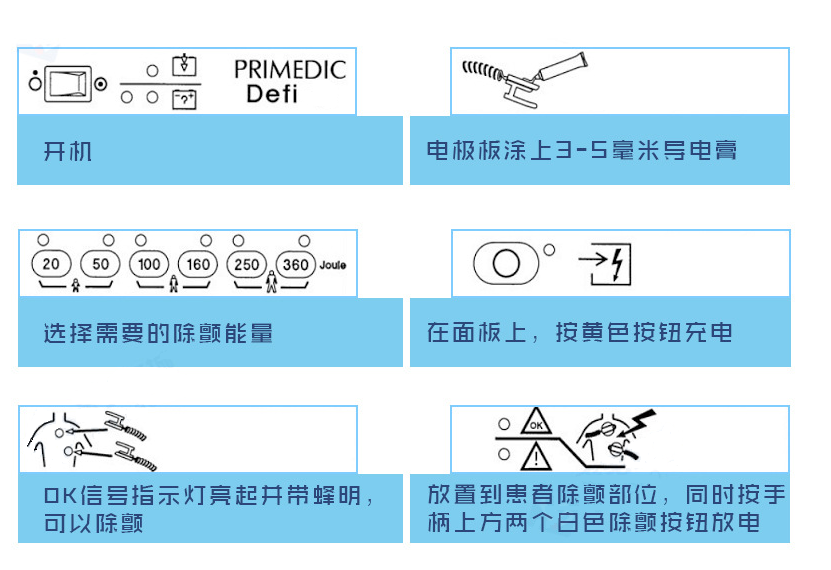Defibrillation is required when the heart starts beating abnormally, and so fast that very little blood can be pumped out of the body. An electric shock is used to help restore normal rhythm to the heart.
Heart defibrillators, medical devices that use strong pulsed electric currents to pass through the heart to destroy arrhythmias and restore them to sinus rhythm, are essential first-aid devices in operating rooms. Defibrillation is one of the most important steps in cardiopulmonary resuscitation. A normal, regular or organized electrical rhythm through the heart is necessary for the muscles to contract and pump blood into the body.
When a person is in cardiac arrest, they either have no current, or no current, a fast rhythm that prevents the heart's pumping chambers from filling properly (ventricular tachycardia), or no electrical rhythm or current in the tissue that doesn't allow the heart muscles to contract and circulate blood to the body (ventricular fibrillation). Ventricular fibrillation and ventricular tachycardia can be stopped by electric shocks to restore normal heart rhythm and body circulation. This is called cardioversion or defibrillation.
Defi7 Heart defibrillator is very accurate and easy to use. There are many different brands of Heart de Fibrillators out there, but the same basic steps apply to all of them.
The difference between Monophasic defibrillator and Biphasic defibrillator
It's two different ways the defibrillator works.
Fibrillators have two electrodes, monophasic defibrillators emit a single electric shock, the time it takes to travel through the body is determined by the body's electrical resistance, and because they are unidirectional, the energy required to defibrillate is large (360J).
Biphasic defibrillators, after producing a shock, produced a reverse shock, and were able to control the timing of the shock, so the energy required to defibrillate was small (150-200J) because the shock traveled through the body twice.
How to use a Heart defibrillator?
Cardiac defibrillation use process
Before use, check whether all functions of cardiac defibrillation are in good condition, whether power supply is faulty, whether charging is sufficient, and whether all wires are broken and in bad contact. As a rescue device, the defibrillator should always be in good condition, and the battery is fully charged, so that the defibrillator can be used for emergency shock at any time. Defibrillator is a kind of instrument which uses electric energy to treat rapid ectopic arrhythmia. Equipped with electrodes, most of the size of two pairs, large for adults, small for children.

1. Place the defibrillator beside the patient and turn on the defibrillator;
2. Untie the patient's clothes;
3. Attach two electrodes to the upper left and right chest of the patient according to the instructions;
4. Stop CARDIopulmonary resuscitation, do not contact the patient, and wait for defibrillator to analyze the heart rate;
5. if the defibrillator shows "recommended electric shock", should remind everyone not to contact the patient, and confirm;
6. Press the electric shock button and continue CPR for two minutes after defibrillation. Wait for defibrillator to analyze the heart rate after completion.
7. If the defibrillator indicates no shock is needed, CPR should be performed for another 2 minutes, and the rhythm of the heart should be analyzed by the defibrillator.
8. Alternate defibrillator and CPR should be used before the patient wakes up and 120 days later. Defibrillator can improve the survival rate of patients with sudden cardiac death. This is because the heart rhythm of patients with ventricular fibrillation can be restored to normal, enabling more patients in need of defibrillation to receive effective medical emergency. Trials have shown that for every minute of early defibrillation in a sudden cardiac arrest, the survival rate increases by 7-10%, saving more lives.